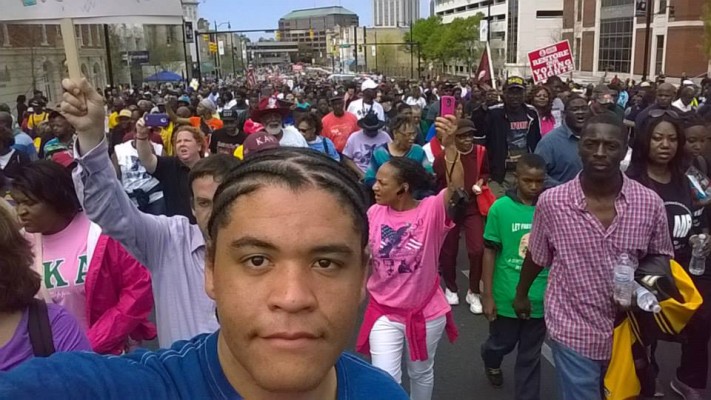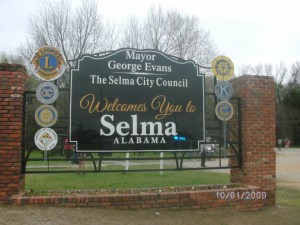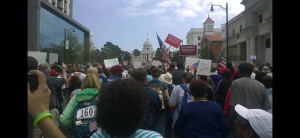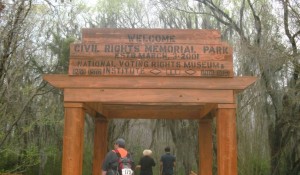
TreVaughn Hawkins participated in the National Park Service’s Walking Classroom march
between March 22 and March 26.
Walking anywhere between seven and twelve miles a day, Colorado State University student TreVaughn Hawkins had a unique spring break. He participated in the National Park Service’s Selma-to-Montgomery Walking Classroom, a commemoration of the 50th anniversary of the 1965 march. The event took place March 20-26 in Alabama, a few days after President Obama commemorated the same event.

An art student with a minor in ethnic studies, Hawkins was encouraged to apply by his ethnic studies professor, Ray Black.
“TreVaughn is an extremely smart and shy student,” said Black. “He has been in several of my classes and on the rare occasions when he speaks, he is sharp, on point and has everybody listening and thinking. I encouraged him to apply because I knew the experience would be life-changing for him. We talked about the march and the modern Civil Rights movement in our African American history class, but the NPS Walking Classroom has made what I teach tangible and real.”
Hawkins, alongside a group of about 150 students from 29 different states, many of whom he befriended, treaded 54 miles from Selma to Montgomery to commemorate the 50th anniversary of the historical march. Nearly 150 public participants joined the students.
The group walked and traveled by bus through construction areas over the course of five days, stopping at important landmarks and acknowledging the violence and loss that took place in those spots. Guest speakers, civil rights activists, professors, and original marchers shared their stories and taught the group about the relationship between the social and racial issues then and those affecting the United States today.

Hawkins became connected to his own African American history while meeting a participant who had taken part in the original march. The man encouraged him to also value and recognize the part white people had in the 1965 march, thus strengthening its effect.
When Hawkins met an older man who was a part of the original march, he became connected to his own African American history. He also learned from him to value and recognize the part white people had in the 1965 march, strengthening its effect.
“Three of the four victims that died in the march in 1965 were white,” said Hawkins. “White people helped too, and that stuck with me. If racism is going to be erased, we need to all come together instead of blaming one group or another. Even so, we must still keep up the fight against those who are racist, but together.”

The National Parks Service organized the 50th Anniversary commemorative march, which is part of their “Walking Classroom” series. The names of all the students who participated will be included in the national archives as the first group to participate in this commemorative march.
“I am also grateful for meeting all of the people who marched with me through rain and heat,” said Hawkins. “I will never forget this experience.”